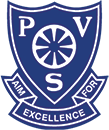Keeping safe curriculum
Protective Behaviours
At Pioneer Village School we actively encourage our children to have a voice, understand and recognise their feelings, and build healthy relationships. In support of this, and for many years now, our educators have had professional development in the Protective Behaviours area and have incorporated teaching strategies into their daily classroom practice.
Child Protection
Child protection is a sensitive and challenging area, but it is a fundamental and non-negotiable responsibility of schools to provide a preventative curriculum, under the Department of Education Child Protection Policy. At Pioneer Village School we use the Keeping Safe: Child Protection Curriculum (KS:CPC) and all PVS educators have received explicit training on the use of this program.
About the Keeping Safe: Child Protection Curriculum
The KS:CPC is an evidence-based, best practice curriculum developed collaboratively with child protection specialists, teachers, educational leaders and other professionals. It covers a range of concepts including new additional material on contemporary issues such as bullying and cyber safety. It has been developed by the South Australian Department of Education and is recommended by the Association of Independent Schools WA (AISWA) as a comprehensive and excellent child protection curriculum that allows for a whole school approach extending from the age of three to senior secondary schooling.
Organisation of Keeping Safe: Child Protection Curriculum (KS:CPC)
The curriculum is based on two main protective behaviours themes and are presented through topics and activities.
• We all have the right to be safe
• We can help ourselves to be safe by talking to people we trust
Focus Areas
The two themes are explored through four Focus Areas, which are examined in growing complexity in accordance with the age of the learners.
• The right to be safe
• Relationships
• Recognising and reporting abuse
• Protective strategies
The Keeping Safe: Child Protection Curriculum has been designed to teach children and young people to recognise abuse, tell a trusted adult, understand what is appropriate and inappropriate touching and ways of keeping themselves safe. All our educators have received explicit training in the KS:CPC.
Informing Families
For both families and teaching staff, the issue of child protection is an emotive topic that can generate strong feelings and reactions. We may feel strong emotions in regards to the topic due to a number of reasons. The range of responses to this issue makes it an extremely sensitive area and one in which as a community we must seek to keep the rights of our children to protection paramount.
Our educators can provide families supporting strategies to reinforce concepts at home especially in the sensitive issues such as anatomical names for body parts, children’s rights over the privacy of their bodies, recognising abuse and reporting abuse to someone they trust.
Protective strategies can not be employed unless children recognise situations of actual abuse or potential abuse. It is important for children to develop knowledge about what constitutes abuse and skills to protect themselves, skills which are appropriate to their age and stage of development. For example, for younger students the term ‘abuse’ is addressed within the curriculum by the use of terms such as ‘unsafe’ and ‘unfair’. The themes are then developed in growing complexity in accordance with the age of the learners.
The KS:CPC supports our staff in dealing with this challenging and sensitive area of health and well-being by providing age appropriate lessons, topics and activities as well as providing resources for students from culturally or linguistically diverse backgrounds and for students with disability.
Empowering Children
As adults we are all responsible for keeping children safe. This curriculum does not replace the parent/caregiver’s responsibility to protect children and ensure their safety and is not putting the responsibility on the child. It is designed to complement parents/caregivers’ roles and provides support for the learning of children. The program is informed by a fundamental belief that children have a right to physical and psychological safety at all times and that by arming them with skills and strategies to recognise their feelings and take appropriate action or seek help we give them another circle of protection.
If you have any questions or concerns about the Child Protection Curriculum and would like further clarification please familiarise yourself with the curriculum here or make a time to chat with your child’s teacher. It is through awareness and preparedness we act to prevent harm.



